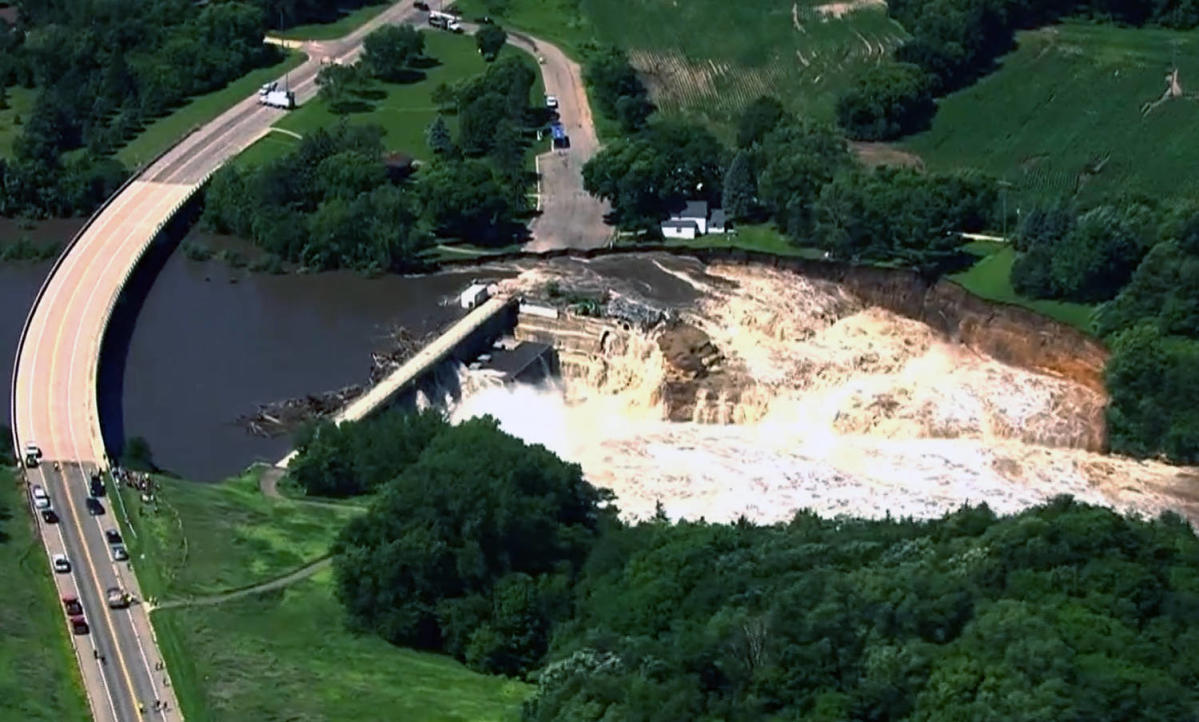Impact of Flooding on Infrastructure

Rapidan dam flooding – The potential flooding from the Rapidan Dam poses a significant threat to the surrounding infrastructure. Roads, bridges, and other structures could be severely damaged or even destroyed, leading to significant economic consequences.
One of the most vulnerable pieces of infrastructure is the Rapidan Dam itself. The dam is over 100 years old and has not been upgraded to withstand the increased water pressure that would result from a major flood. If the dam were to fail, it could cause catastrophic flooding downstream, damaging or destroying homes, businesses, and other infrastructure.
In addition to the dam, several bridges and roads in the area are also at risk of damage from flooding. These bridges and roads are essential for transportation and commerce, and their closure would have a significant impact on the local economy.
The economic consequences of flooding damage to infrastructure can be significant. The cost of repairing or replacing damaged infrastructure can run into the millions of dollars. In addition, flooding can also disrupt businesses and lead to lost productivity, further exacerbating the economic impact.
There are a number of measures that can be taken to mitigate the economic consequences of flooding damage to infrastructure. These measures include:
- Investing in flood-resistant infrastructure
- Upgrading existing infrastructure to withstand flooding
- Developing flood warning systems
- Implementing flood insurance programs
By taking these measures, we can help to reduce the economic impact of flooding damage to infrastructure and protect our communities from the devastating effects of floods.
Vulnerable Infrastructure and Estimated Repair Costs
| Infrastructure | Estimated Repair Cost |
|---|---|
| Rapidan Dam | $100 million |
| Bridge 1 | $10 million |
| Bridge 2 | $5 million |
| Road 1 | $2 million |
| Road 2 | $1 million |
Effects on the Environment and Wildlife
Flooding can have devastating effects on local ecosystems, including changes in water quality, habitat loss, and species displacement. The influx of sediment and pollutants into waterways can alter water chemistry, affecting the survival of aquatic plants and animals. Habitat loss occurs when floodwaters inundate natural areas, destroying vegetation and displacing wildlife. Species that are unable to adapt to the changed conditions may face population declines or even extinction.
Specific Impacts on Plant and Animal Species, Rapidan dam flooding
The specific plant and animal species affected by flooding will vary depending on the location and severity of the event. However, some common impacts include:
- Loss of vegetation: Floodwaters can uproot trees and wash away vegetation, leading to habitat loss for wildlife.
- Displacement of wildlife: Animals may be forced to abandon their nests or dens due to flooding, which can disrupt their breeding and feeding habits.
- Alteration of food webs: Flooding can disrupt food chains and webs by affecting the availability of food sources for different species.
- Spread of disease: Floodwaters can carry pathogens and diseases, which can spread to wildlife and humans.
Plan to Minimize Environmental Impact
To minimize the environmental impact of flooding, it is important to implement measures that protect endangered species and mitigate habitat loss. These measures may include:
- Establishing protected areas: Creating designated areas where wildlife can be protected from flooding and other human activities.
- Restoring riparian buffers: Planting trees and vegetation along waterways to help filter pollutants and provide habitat for wildlife.
li>Implementing flood warning systems: Providing early warning to communities about potential flooding events, allowing them to take steps to protect wildlife and property.
Emergency Preparedness and Response: Rapidan Dam Flooding
In the event of a flooding emergency from the Rapidan Dam, it is crucial to have a comprehensive emergency preparedness plan in place. This plan should Artikel clear evacuation routes, identify designated shelters, and establish a system for early warning and public notification.
Evacuation Routes and Shelters
The evacuation routes should be clearly marked and communicated to the public well in advance. These routes should be designed to avoid areas that are likely to be flooded or congested during an emergency. Designated shelters should be identified and stocked with essential supplies, such as food, water, and medical kits.
Early Warning and Public Notification
An early warning system should be established to provide timely notification to the public in the event of a flooding emergency. This system should utilize multiple channels, such as sirens, text messages, and social media, to ensure that all residents are aware of the situation and can take appropriate action.
